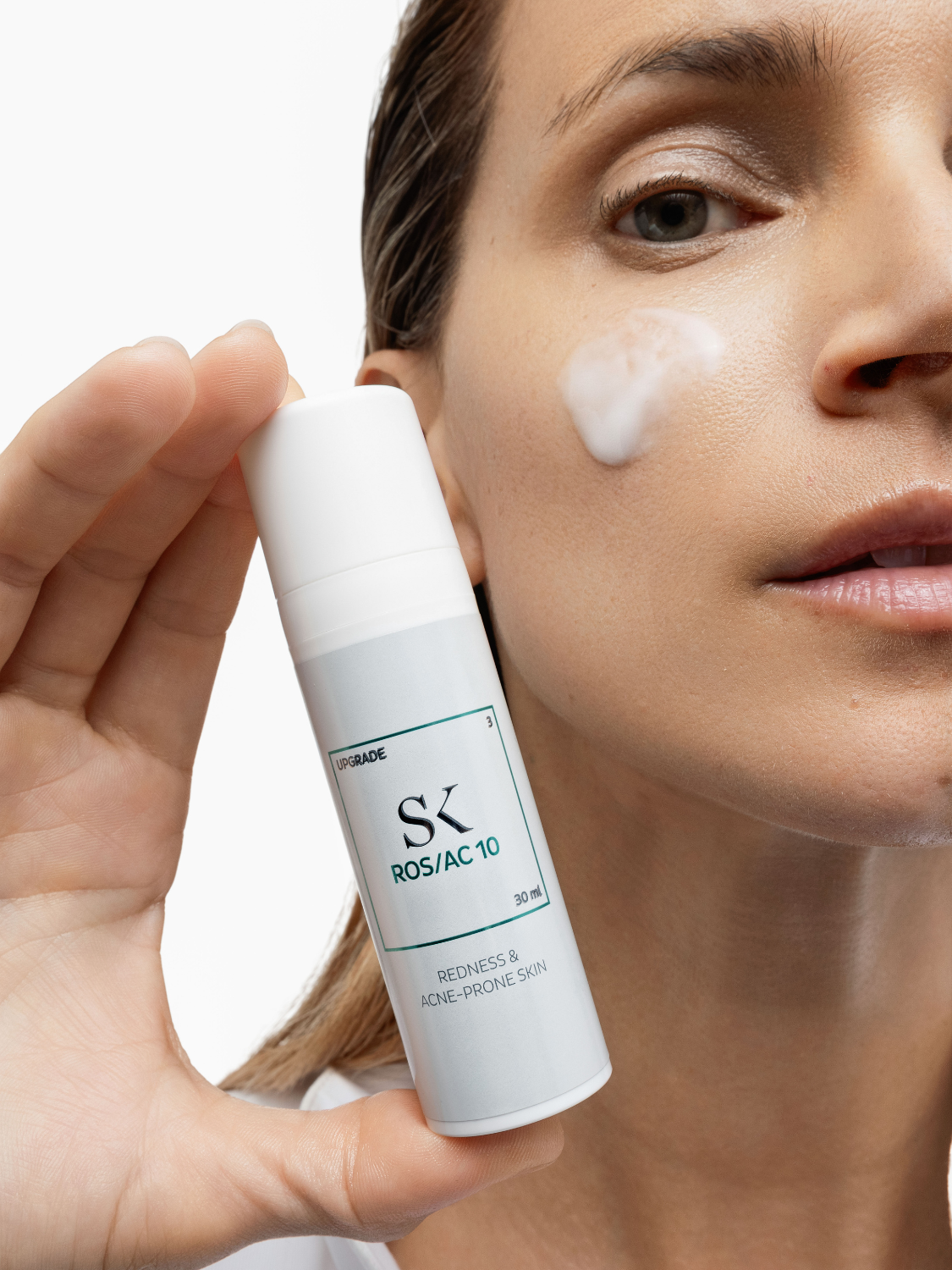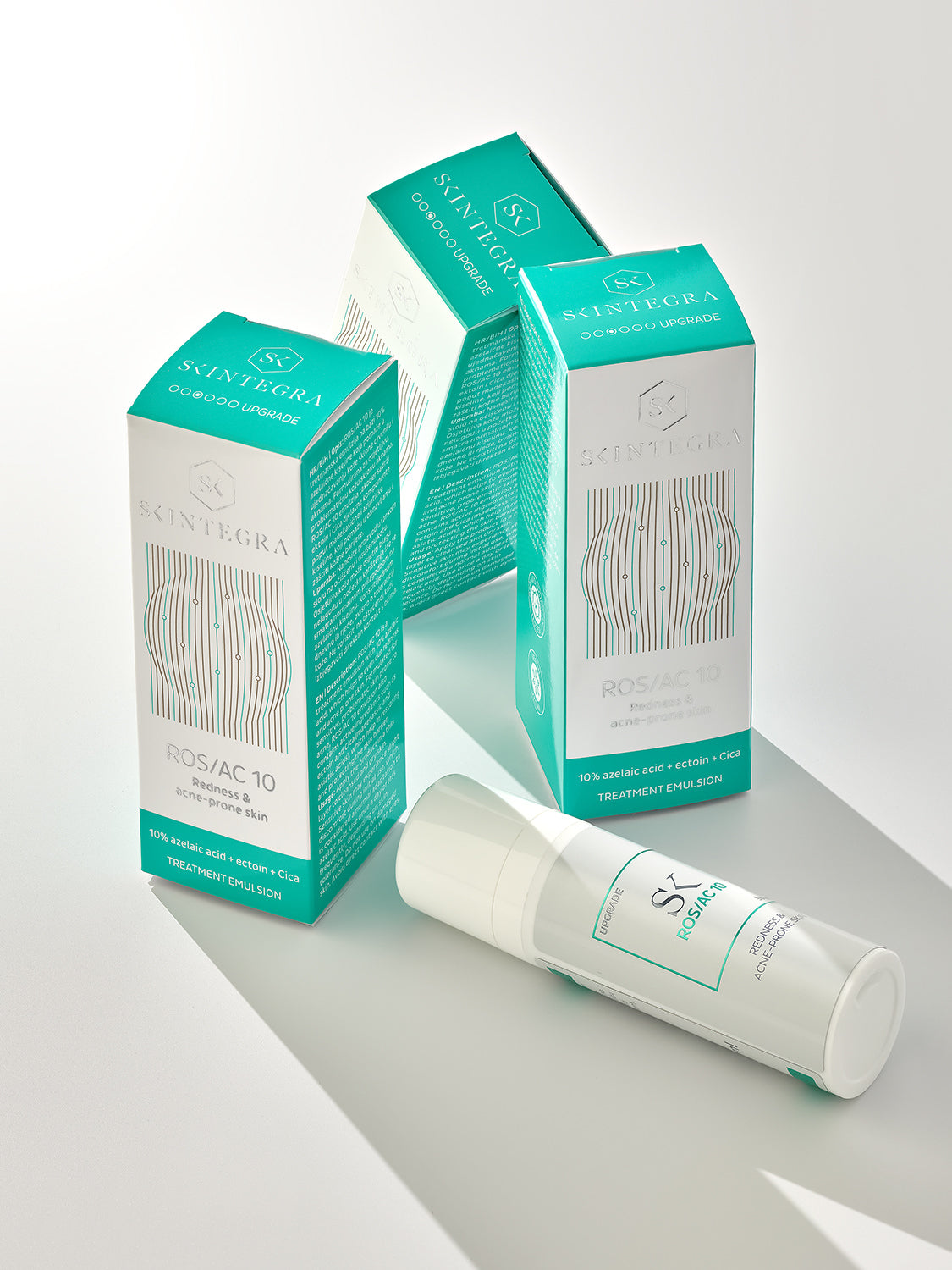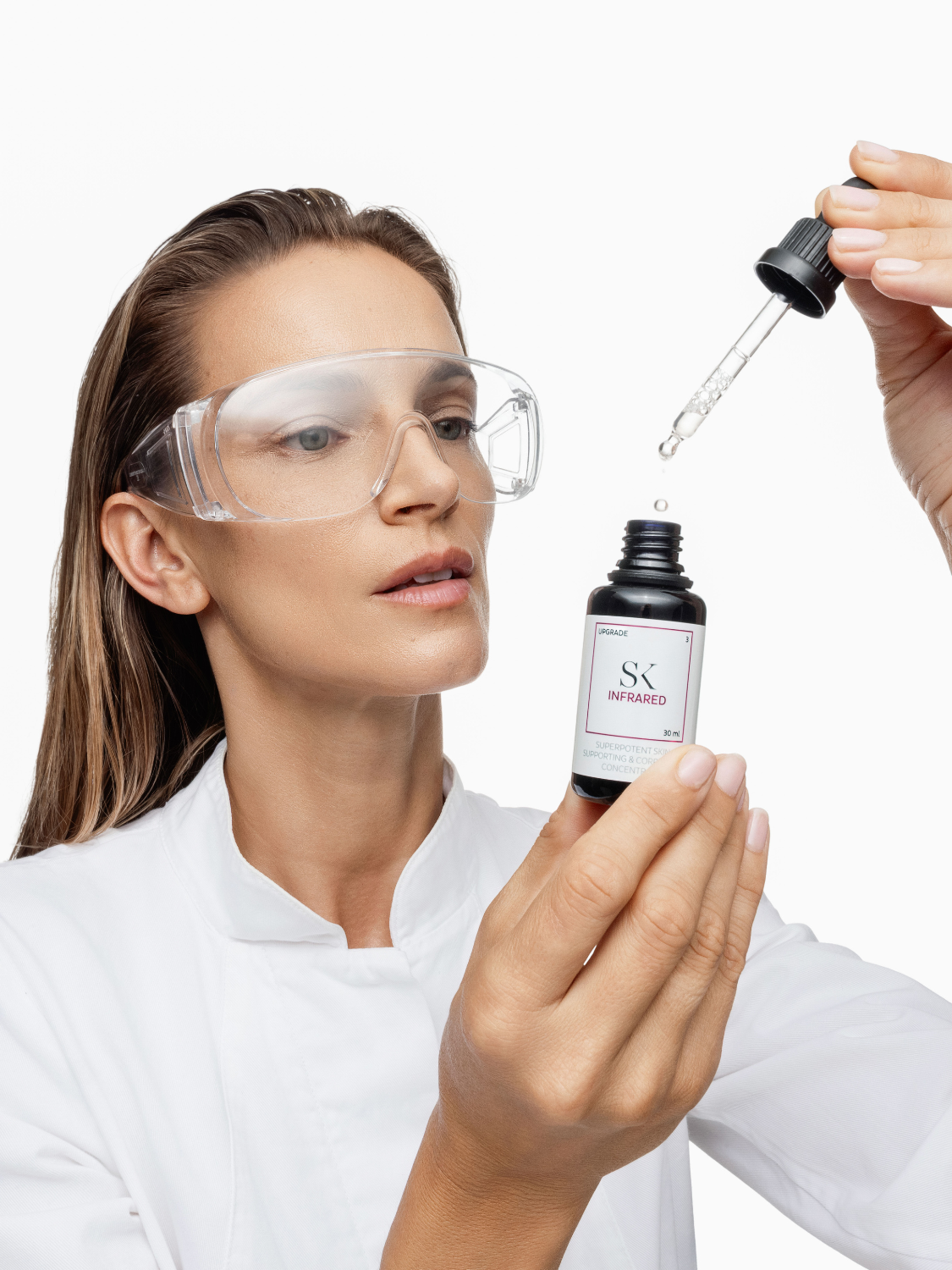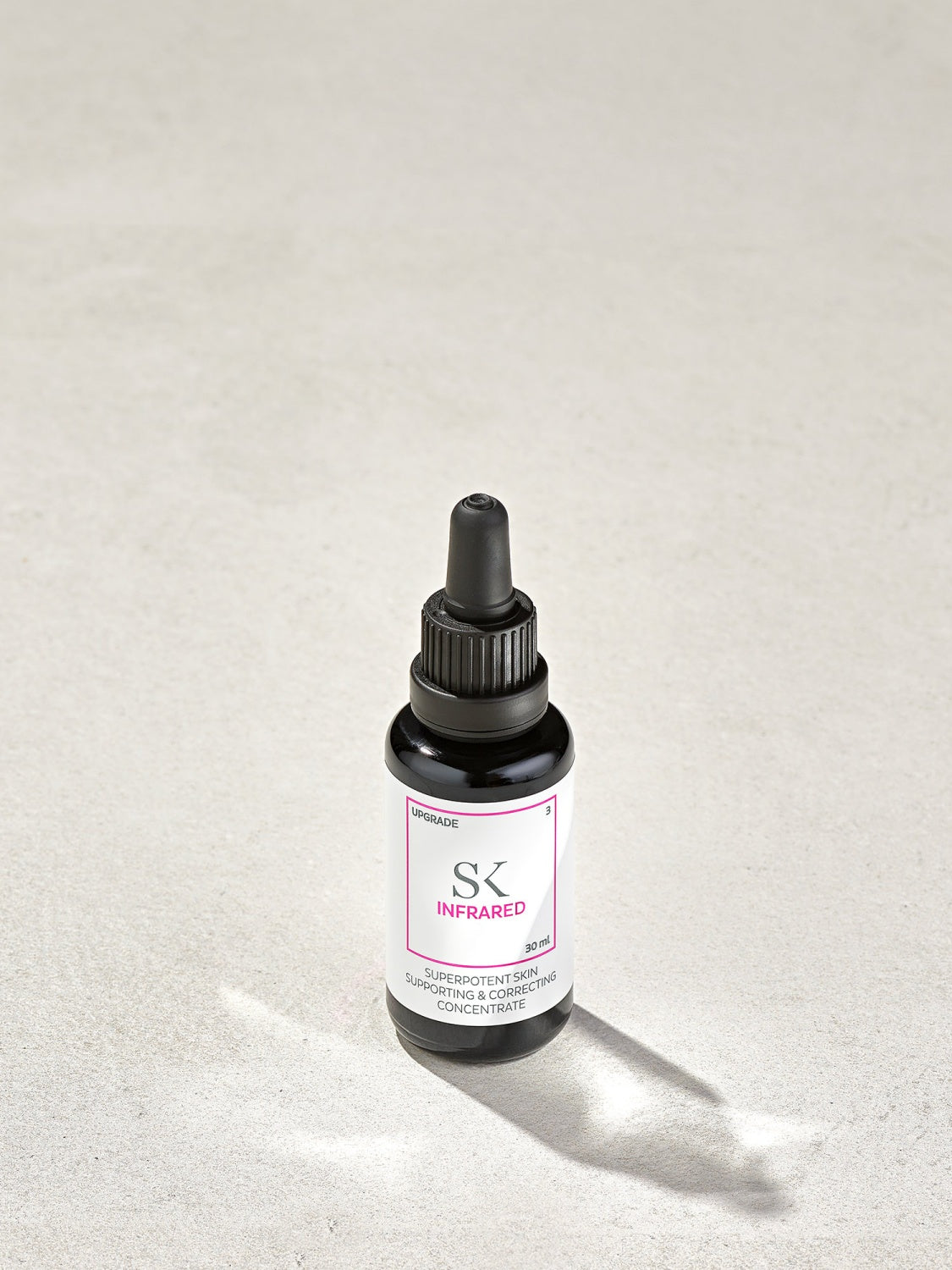When it comes to acids, azelaic acid is probably not the first thing that comes to mind, but it is a very versatile ingredient that suits almost everyone, even those with sensitive skin, and whose superpowers, in addition to a mild keratolytic effect, include anti-inflammatory and antibacterial effect as well as the fading of hyperpigmentation spots. We will explain what azelaic acid is, how it works and why its derivative azeloglycine is the star of our Infrared serum and Hyperdew mask.
What is azelaic acid?
Azelaic acid is a natural saturated dicarboxylic acid of plant origin. It has proven to be effective in the treatment of acne (both comedonal and inflammatory), rosacea and hyperpigmentation changes , including melasma and treatment spots, thanks to its unique properties that inhibit undesirable processes in the skin. Also, it is an ingredient compatible with all skin types, so its additional advantage is that it is well tolerated by individuals with sensitive skin prone to redness and irritation.
What is the mechanism of action of azelaic acid in the treatment of skin problems?
Hyperpigmentation changes occur due to genetic predisposition, but also due to damage caused by UV radiation, which leads to hyperproduction of melanin. Azelaic acid works in the treatment of hyperpigmentation changes thanks to its ability to inhibit the synthesis of DNA and mitochondrial enzymes, thus inhibiting melanocytes. It acts as a competitive inhibitor of tyrosinase , a key enzyme in melanogenesis, but also a reversible inhibitor of cytochrome-P450 reductase and 5 α -reductase. In addition, the effectiveness of azelaic acid in lightening hyperpigmentation spots is also attributed to its antioxidant effect.

Hyperpigmentation often occurs as a result of hormonal changes during pregnancy , which is why we sometimes call them the "pregnancy mask". However, the fact that azelaic acid is suitable for use during pregnancy and breastfeeding is good news for all expectant mothers.
An increasingly common skin disease in the treatment of which azelaic acid plays an important role is rosacea - a chronic dermatosis that is recognized by the redness of the central part of the face, with the frequent appearance of enlarged capillaries, papules and pustules. Unfortunately, there is no cure for rosacea, but there are treatments that, in addition to avoiding rosacea triggers, help reduce its signs and symptoms. The use of azelaic acid leads to a significant reduction in kallikrein-5 (KLK5) levels as well as total serine protease activity in rosacea patients whose skin oversynthesizes the serine protease kallikrein-5. In addition, it has been shown to be particularly effective in the treatment of papulopustular rosacea due to its anti-inflammatory effect , especially the activation of PPARγ, a nuclear receptor involved in inflammation in dermal fibroblasts. It is also believed that azelaic acid inhibits the expression of interleukins IL-1 and IL-6 and tumor necrosis factor TNF-α, reducing the level of reactive oxygen species and pro-inflammatory factors.
Azelaic acid is also effective in targeting the multiple causes of acne. The antikeratinizing effect shows an inhibitory effect on the formation of comedones, which is desirable because in the pathogenesis of acne, the disturbed function of the hair canal also plays an important role, which leads to hyperkeratosis and the formation of a "plug", i.e. a comedone that prevents further discharge of sebum. In addition, this versatile ingredient also has an antimicrobial effect , inhibiting the proliferation of microorganisms , which is very useful considering that inflammatory acne occurs as an immune response to the action of C. acnes bacteria. The anti-inflammatory properties of azelaic acid are also well documented, and clinical research has shown that topical application significantly reduces the number of papules and pustules.
What is azeloglycine and how is it different from azelaic acid?
Azeloglycin (Potassium azeloyl diglycinate or PAD) is a derivative of azelaic acid obtained by its condensation with the hydrating amino acid glycine. PAD is a water-soluble ingredient, so its advantage is a lighter formulation due to better stability and compatibility.

Azeloglycin retains the many beneficial properties of azelaic acid , as well as AHA and BHA acids, but without the keratolytic effect and the fear of irritation and drying. This derivative of azelaic acid effectively lightens spots, evens skin tone and regulates sebum secretion , and in addition acts as a humectant , deeply hydrating the skin and making it elastic. The numerous advantages of this innovative ingredient include strengthening the barrier function of the skin with a soothing effect and reducing burning and redness in rosacea and sensitive skin.
Which Skintegra products contain PAD?
PAD is the main star of Infrared and Hyperdew . Infrared is a soothing concentrated serum that, in addition to 5 % PAD, also contains niacinamide, panthenol, ectoine and a complex of herbal ingredients that act synergistically to calm the symptoms of inflammation, deeply moisturize and correct irregularities on the skin. Although it is a soothing formula, Infrared is very potent, so initially we recommend using it once a day, and over time it is possible to introduce it into both the morning and evening skin care routine.

The winning combination of the Hyperdew leave-on moisturizing mask consists of 5% PAD , 30% NMF, probiotic ferments and a complex of zinc and copper. Thanks to water-burst technology , Hyperdew provides superior hydration, but also corrects irregularities, evens out skin tone and prevents the first signs of aging . As with any mask, we recommend using it in the evening routine 1-2 times a week.
Literature:
- Searle, Tamara & Ali, Faisal & Al-Niaimi, Firas. (2020). The versatility of azelaic acid in dermatology. Journal of Dermatological Treatment. 33. 1-31.
- Nazzaro-Porro, Marcella. (1988). Azelaic Acid. Journal of the American Academy of Dermatology. 17. 1033-41.
- Sieber, Martin & Hegel, JKE. (2013). Azelaic Acid: Properties and Mode of Action. Skin pharmacology and physiology. 27 Suppl 1. 9-17.
- Rigano, Luigi & Cucchiara, M.. (2003). Azeloyl-Glycine: A new active in skin disequilibrium. Journal of Applied Cosmetology. 21. 177-188.





